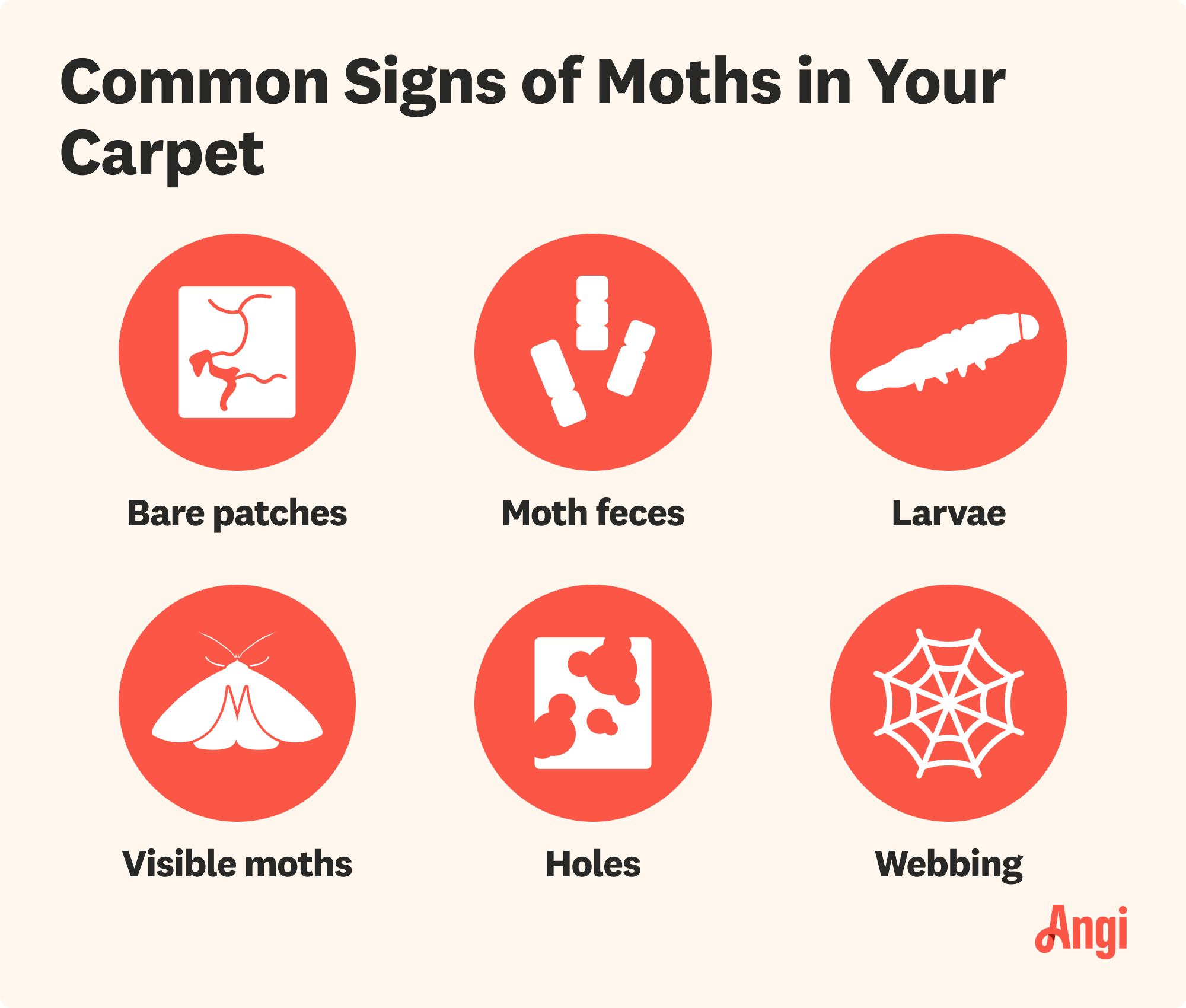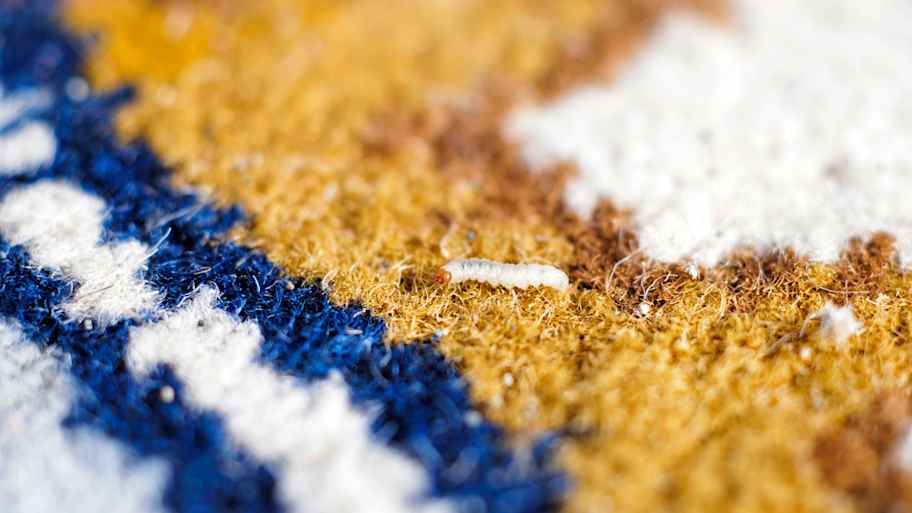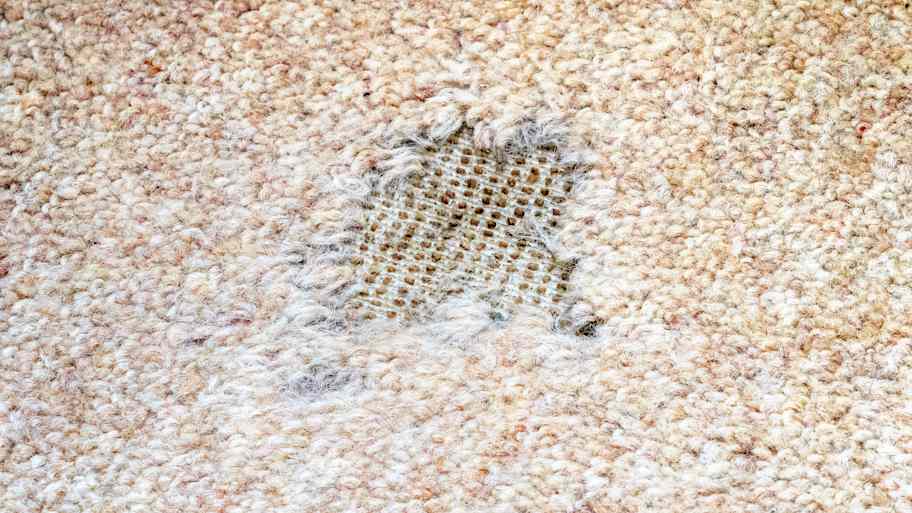
Snake removal cost comes down to the type and number of snakes you’re dealing with and where they’re located inside your home. This guide breaks it down.
Let’s shed some light on these nocturnal insects


Carpet moths have light brown wings spanning 1 to 2 centimeters.
Moth larvae are small, white, worm-like critters spanning 1 mm to 1.5 cm.
Female moths can lay up to 500 eggs per day.
Getting rid of carpet moths costs $200 to $370 for extermination.
You’re probably already familiar with clothing moths, especially if you keep cherished cashmere sweaters in your wardrobe. But these moths can also destroy your carpets and other household upholstery as they spread. The best way to prevent an infestation is to catch the problem early, so watch closely for these six common signs of moths in your carpets.

Carpet moths and their larvae can go undetected for several months, if not years, before you have a bigger infestation at hand. Look out for these signs of moths in your carpet to fix the problem as early as possible.
One of the biggest signs of moths in your carpets is bare patches around the carpet or rug. The moth larvae will eat away at the carpet for weeks or months. This can leave behind lines or full patches of carpet that are completely threadbare.
Moths may leave behind their droppings, another telltale sign of moths in your carpets. These droppings will look like small, dark spots around the carpet, especially along edges or in crevices.

You may need to break out the microscope to look for moth larvae in your carpets. Moth larvae look like small white or cream-colored worms and are as small as 1 millimeter or up to 1.5 centimeters.
You might also see the moths themselves, either running along the carpets or flying, particularly in dark areas. Carpet moths have shiny brown bodies that are 6 or 7 millimeters long and light brown wings that span 1 to 2 centimeters.

Carpet moths are the same thing as clothing moths (but are different from pantry moths), and they’ll feed on many different types of fabrics. These moths prefer natural fibers containing the protein keratin, so you may notice damage to your vintage wool rug, your favorite cashmere sweater, or your luxe silk drapes. (Unfortunately, these pests have a taste for the finer things over synthetic fabrics, but they’ll eat those, too.)
Carpet moth larvae may leave behind a silky, web-like substance over your carpets or other fabrics. The larvae spin these strands along the fabric or around themselves to help with movement.
If you notice any signs of moths in your carpets, no matter how small, you should call in a local pest control pro. Here’s why: Carpet moth females can lay an average of 200 to 300 eggs per day, and some can lay in the range of 400 to 500 per day. It takes only about a week for the eggs to hatch. A small infestation can quickly become severe, and more larvae means far more damage to your carpets, upholstery, and clothing.
To get rid of moths in your carpet, you can use some DIY tactics like thoroughly cleaning the carpet and other affected fabrics or using commercial moth control products. But again, with how quickly moths can spread, you’ll want to consider pro extermination to quickly control moths before more eggs hatch.
There are many things you can do to prevent carpet and clothing moths, including:
Frequent vacuuming: Vacuum rugs, carpet, and upholstered furniture often, at least once per week. Vacuum the top and bottom of rugs.
Clean new clothes: Always wash and dry or dry clean clothes after buying, whether new or secondhand. Also, regularly clean clothes and other fabrics to wash away any eggs or larvae.
Add natural repellents: Some scents, like cedar, mint, cloves, and rosemary, can deter moths. Use homemade sachets, essential oils, or cedar planks near clothes to dissuade moths from stopping by.
Moth extermination costs $200 to $370 on average, and pros may use chemical treatments, heat treatments, or fumigation to effectively get rid of the moths. However, after moth extermination, be sure to follow the exterminator’s prevention advice to keep moths from coming back.
From average costs to expert advice, get all the answers you need to get your job done.

Snake removal cost comes down to the type and number of snakes you’re dealing with and where they’re located inside your home. This guide breaks it down.

Whether you have bugs, bats, or rodents invading your home, you’ll want to contact an exterminator quickly. Find out how much pest control costs in Columbus, OH.

Your mosquito misting system cost will vary based on factors such as the size, type, brand, and more. Find out what the budget for this system looks like.

Wasps are considered scary pests. But how do you tell a dangerous wasp from a helpful one? Here’s how to identify common types of wasps.

Your pets may pick up fleas in the yard and spread them through the house. Learn how to get rid of fleas in your yard to treat the problem at its source.

Taking on a flea infestation means destroying the source—their eggs. In addition to calling the pros, there are some DIY tricks for how to get rid of flea eggs.